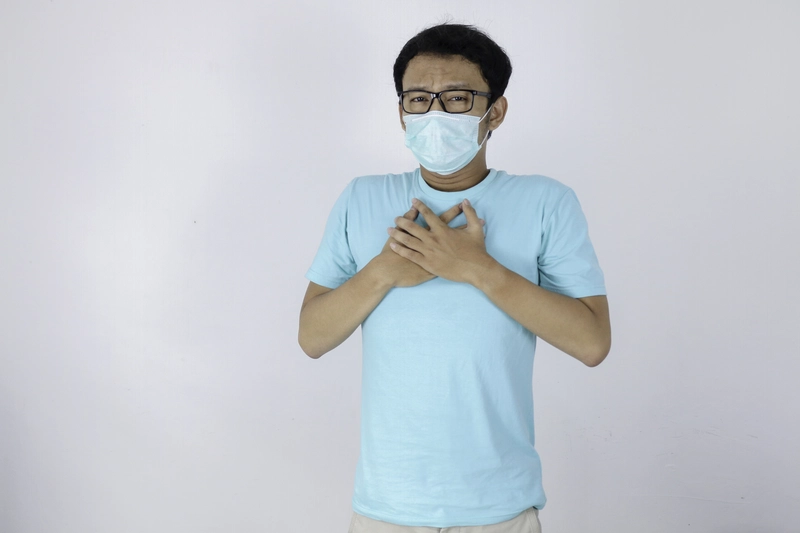General Health
The Myths and Facts About Pneumonia, What Are They?
Share to

Table of Contents
- Understanding Myths and Facts About Pneumonia
- 1. Myth: Pneumonia Is the Same as Flu
- 2. Myth: Pneumococcal Vaccine Can Cause Pneumonia
- 3. Myth: Pneumonia and Bronchitis Are the Same
- 4. Myth: Pneumonia Only Affects Older Adults
- 5. Myth: Pneumonia Heals Quickly
- 6. Myth: Antibiotics Can Cure All Types of Pneumonia
- 7. Myth: Pneumonia Only Occurs in Winter
Pneumonia is an inflammation of the lungs caused by infection. In this condition, the air sacs (alveoli) can be filled with fluid or pus, leading to symptoms such as difficulty breathing, coughing, chills, and fever.
It is important to watch out for this condition. Unfortunately, the myths about pneumonia that circulate in society often cause this condition to be overlooked. So, what are the myths about pneumonia? What are the actual facts? Check out more information in the following article.
Understanding Myths and Facts About Pneumonia
As previously stated, pneumonia is an infection that causes inflammation in the lower respiratory tract, specifically the lungs, leading these organs to be filled with fluid, mucus, or pus.
Pneumonia can happen due to viral, bacterial, or fungal infections, although it most commonly occurs because of bacteria. This condition can also be triggered by the SARS-CoV-2 virus (the cause of COVID-19), which can have more serious impacts. It is important to understand the various facts about pneumonia to avoid falling for its myths. Here are the details of the myths surrounding pneumonia and the corresponding facts.
1. Myth: Pneumonia Is the Same as Flu
In fact, pneumonia is not merely flu. Flu is an upper respiratory tract issue, while pneumonia affects the lower respiratory tract, from the larynx to the lungs. Flu is primarily caused by viruses, particularly rhinoviruses. On the other hand, pneumonia can result from infections caused by viruses, bacteria, or fungi.
Pneumonia can induce symptoms such as difficulty breathing (shortness of breath), fever, cough, and chest pain. It typically requires weeks to recover from. In contrast, flu generally resolves on its own within a few days, and its symptoms are not as severe as those of pneumonia.
2. Myth: Pneumococcal Vaccine Can Cause Pneumonia
In fact, the pneumococcal vaccine does not cause pneumonia. Instead, this vaccine helps prevent infections. This type of vaccine does not contain live bacteria, meaning the bacteria in the vaccine are dead and thus not harmful.
However, like most vaccines, the pneumococcal vaccine may trigger mild side effects, such as fever for one to two days. This condition is not a cause for concern as it typically resolves on its own, even without treatment.
3. Myth: Pneumonia and Bronchitis Are the Same
In fact, pneumonia is a condition that is different from bronchitis. For your information, bronchitis is the inflammation and infection of the bronchial tubes (the passages that carry air to the lungs).
On the other hand, pneumonia affects the air sacs located at the end of the lungs, in which the lungs take in oxygen (alveoli). Although the symptoms are quite similar, doctors can differentiate between the two conditions through an X-ray examination.
4. Myth: Pneumonia Only Affects Older Adults
In fact, pneumonia can occur in anyone. However, older adults, children under the age of 5, and individuals with weakened immune systems, such as those with HIV, cancer, and diabetes, are at a higher risk of developing pneumonia. Regardless, older children and young adults are still at risk of experiencing lung infections.
5. Myth: Pneumonia Heals Quickly
In fact, for some individuals, recovery from pneumonia can take a long time. In some cases, pneumonia patients may require several weeks to fully recover and regain their lung strength and function. Proper treatment can help patients recover more quickly from this condition.
6. Myth: Antibiotics Can Cure All Types of Pneumonia
In fact, pneumonia treatment can vary and does not always involve antibiotics, depending on the cause and symptoms. Antibiotics are effective in treating pneumonia caused by bacteria but not for pneumonia caused by viruses. Doctors will determine the most appropriate treatment after identifying the cause and conducting a thorough examination.
7. Myth: Pneumonia Only Occurs in Winter
In fact, pneumonia can occur at any time of the year, not just during the winter season. While it is true that pneumonia, flu, and respiratory viral infections tend to be more prevalent in winter, these illnesses can actually occur at any time. The germs that cause pneumonia (viruses, bacteria, and fungi) are always present around us. Therefore, it is important to take preventive measures at all times to stay healthy.
This explains the myths and facts about pneumonia that are crucial to understand. In conclusion, the various myths circulating in society regarding pneumonia are not entirely accurate, so it is advisable to consult a Pulmonologist at the nearest Siloam Hospitals if you experience symptoms that might indicate this condition, such as shortness of breath.
The examination and treatment procedures that the doctor or other medical personnel recommend related to this condition may vary depending on the healthcare facility at each hospital. However, medical professionals will determine the appropriate examination and treatment steps according to each patient's medical condition.
You can utilize our MySiloam app to enjoy various health features that enable you to browse doctors' schedules, book an appointment with the relevant doctor, and monitor examination results. Download MySiloam now to enjoy various features that can facilitate your healthcare journey.
Sumber
Banner Health. 10 Myths and Facts About Pneumonia. Diakses pada 2024 | Campbell County Health. Pneumonia Myths and Facts. Diakses pada 2024 |





